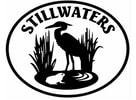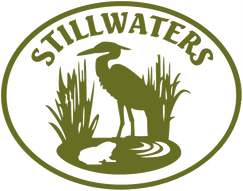Chances are, if you’re from the Kitsap Peninsula you’ve heard of the South Kingston Road culvert and the Stillwaters Fish Passage. The culvert was installed in the 1950s by the Department of Fish and Wildlife under South Kingston Road to create a fish rearing habitat for young salmon. While built with the best of intentions, the culvert did quite the opposite--rather than allowing water exchange between the cove and the estuary, the 10 foot box culvert created scour holes on both sides of the road and kept nutrient-rich sediments from naturally flowing between the estuary and Appletree Cove. Thus, leaving a once robust estuarine ecosystem depleted.
Volunteers at Stillwaters witnessed these changes happening and in 2001 they developed a plan to restore health back to this important ecosystem. However, it wasn’t until ten years later that one of the main components of their plan, removal of the South Kingston Road culvert, was realized. In 2012, the culvert was finally replaced with a 90 foot bridge: the Stillwaters Fish Passage.
In order to document changes in the ecosystem, Stillwaters began taking photographs in 2011 of the estuary using a method called repeat photography. Repeat photography involves taking a picture of the same location over time in order to document visual changes in a landscape. Once a year, a Stillwaters volunteer goes out to the estuary and takes photos from specific points around the site. Below are photos collected from the repeat photography project that showcase the changes that have taken place since the removal of the South Kingston Road Culvert.
Volunteers at Stillwaters witnessed these changes happening and in 2001 they developed a plan to restore health back to this important ecosystem. However, it wasn’t until ten years later that one of the main components of their plan, removal of the South Kingston Road culvert, was realized. In 2012, the culvert was finally replaced with a 90 foot bridge: the Stillwaters Fish Passage.
In order to document changes in the ecosystem, Stillwaters began taking photographs in 2011 of the estuary using a method called repeat photography. Repeat photography involves taking a picture of the same location over time in order to document visual changes in a landscape. Once a year, a Stillwaters volunteer goes out to the estuary and takes photos from specific points around the site. Below are photos collected from the repeat photography project that showcase the changes that have taken place since the removal of the South Kingston Road Culvert.
The photos above were taken in 2011, right before the culvert was removed. Two deep and large scour holes, one on the estuary side of the culvert and one on the cove side of the culvert, are visible. The placement of these scour holes caused them to fill with water that didn’t drain with the tide and trapped fish.
Photos from 2012, taken after the removal of the culvert, show drastic changes in the Carpenter Creek Estuary ecosystem. The large scour hole on the estuary side of the culvert is nearly gone, replaced with visible stream channels flowing from Kingfisher Creek and Carpenter Creek. Vegetation appears to be reestablishing. On the Appletree Cove side, the scour hole has also diminished. The banks of the shoreline have begun changing too. The once steep shoreline has begun to round out and expand.
The changes that began after the removal of the culvert persist in 2015. The stream beds that allow the flow of water from the Kingfisher and Carpenter Creeks appear more established and less fragmented than they were in 2012. The increased water and sediment movement in and out of the estuary has allowed more marine plant life to enter the system. Both scour holes have dissipated, and the Appletree Cove shoreline continues to flatten and expand farther into the cove.
The removal of the South Kingston Road culvert was just the first phase of the original Stillwaters plan from 2001.
The removal of a second culvert on West Kingston Road, and construction of a second fish passage span has increased the flow of salt and fresh water through Carpenter Creek Estuary. Stillwaters will continue to monitor changes in the estuary using a variety of methods including repeat photography, water quality testing, benthic and fish surveys, sediment sampling, and tidal elevation.
The removal of a second culvert on West Kingston Road, and construction of a second fish passage span has increased the flow of salt and fresh water through Carpenter Creek Estuary. Stillwaters will continue to monitor changes in the estuary using a variety of methods including repeat photography, water quality testing, benthic and fish surveys, sediment sampling, and tidal elevation.

